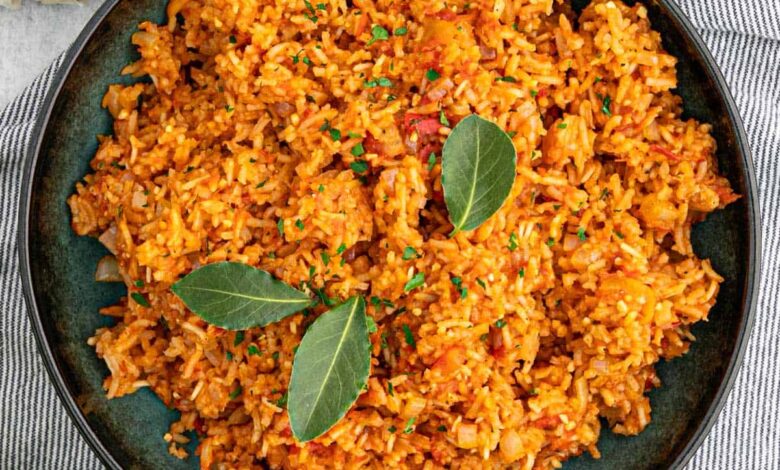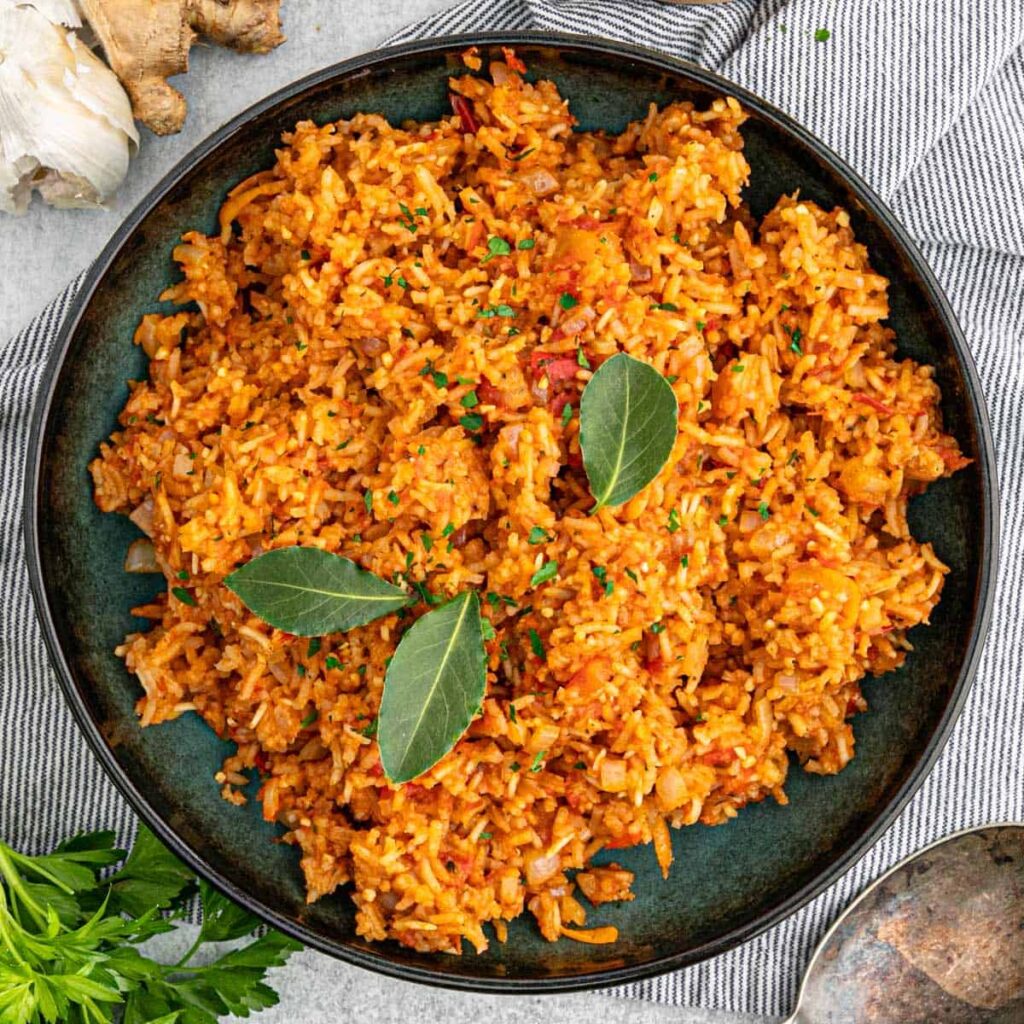Jollof Rice: the Pride of West Africa

Jollof rice is a West African rice dish. The meal is normally cooked in a single pot using long-grain rice, tomatoes, chiles, onions, spices, and occasionally other vegetables and/or meat, however, the ingredients and preparation techniques vary by location. The dish’s roots may be traced back to the Senegambian geographical region.
Regional variations are a cause of competitiveness amongst West African countries, particularly Nigeria and Ghana, over whose version is the greatest; this grew into a friendly rivalry known as the “Jollof Wars” in the 2010s.
Jollof is thought to have originated among the Wolof people of West Africa’s Senegambia, where it is known as benachin. Because of the constant cultural interaction that occurs in the sub-region, the delectable food has spread across the sub-region. As a result, it has evolved into various regional versions, each infused with the culture of the location in which it is produced. Nonetheless, it retains its allure and is enjoyed across Africa.

For those unfamiliar with Jollof rice and wondering how a rice dish can carry such a punch, the trick is in how well it absorbs flavor. You’d never guess that cooking simple rice with peppers, tomatoes, spices, and meats would result in such delicate, but crunchy tomato-stained grains with so much sweetness hidden inside. Another advantage of Jollof rice over other dishes is that it may be served with a wide variety of additional condiments such as salads, avocado, and deep-fried plantains. So, if you’re feeling daring and confident in your culinary abilities, try attempting this original Jollof rice recipe.
Basic Measures to Prepare Jollof Rice
If you want to make Jollof rice, here are some basic measures to take.
In a blender, combine tomato, red bell pepper, habanero pepper, fresno chili, garlic, ginger, and water to make the sauce. Set aside after blending on high speed until smooth.
In a saucepan over medium heat, heat the olive oil. Add the onion and salt and cook for 4 to 5 minutes, or until the onion begins to soften. Make a space in the center of the pan, add the tomato paste, and cook for 2 to 3 minutes. Season with paprika, curry powder, cumin, thyme, pepper, and turmeric; simmer for 1 to 2 minutes more, or until everything is thoroughly mixed.
Remove from the pan and whisk in the rice, coating each grain with the oil-tomato combination. Mix in the bay leaf and chicken bouillon paste.
Turn the heat up to high, add the tomato sauce, and bring to a boil. Cover with a tight-fitting cover and simmer for 20 minutes on medium-low heat. Take off the lid and do not mix the rice.
After 20 minutes, turn off the heat and set the timer for 12 minutes. Allow the rice to rest without removing the top.
After 12 minutes, remove the cover and fluff the rice with a fork, separating all of the grains. Garnish with green onions and cilantro, if desired.
Cook’s Note: If the rice appears to be uncooked at this stage, cease fluffing. Pat the rice down lightly with the back of a fork, then replace the lid and reduce the heat to medium-low. For another 5 minutes, allow to cook then check.
Tips and Tricks
- Rice Type: One of the biggest things that might damage your Jollof rice is if it becomes mushy. This is why choosing the appropriate sort of rice is critical. Typically, any long grain or Basmati rice will suffice. Wash the rice thoroughly, then drain it thoroughly.
- Tomatoes with peppers: A good rule of thumb is to use more pepper than raw tomatoes. More uncooked tomatoes can dilute the color of your Jollof rice.
- Liquids: The liquid used to boil the jollof rice might be stock (beef, chicken, pig, etc.) or just water (with the appropriate seasonings). As a matter of fact, start with equal amounts rice and liquid. For example, if you’re preparing three cups of Jollof rice, use around three and a half cups of stock/water.
- Steam and Heat: Steam is an excellent way to prepare Jollof rice. Allow the sauce to coat the Jollof rice while cooking. After it has dried out, stir in the Jollof rice to ensure that the sauce and rice are thoroughly incorporated, then cover the saucepan with aluminum foil and the pot cover. Instead of adding water over and over, this will enable it to steam until it is finished.
More tips and tricks
- Steaming and the quantity of heat used are quite important. Using extremely low heat can result in soggy rice, but using excessive heat will cause the liquid to evaporate quicker than the rice can soften. Balance is essential. The temperature should be reasonable, i.e. medium.
- Onions: Onions give a deep, unique flavor to jollof rice, so don’t skimp on them! Onions provide flavor to your jollof while still being healthful. The onions should be added at every stage of the cooking process. From the stock to the tomato/pepper mix, the fried sauce is used as the foundation for the jollof, and the garnish immediately after the heat is turned off.
- Seasonings & spices: A colorful and well-cooked jollof rice is meaningless unless it is adequately flavored. Thyme, curry, bay leaves, salt, seasoning cubes, white pepper, black pepper, and paprika (for added flavor) are all good additions to jollof rice. Bay leaves are essential in giving jollof rive its flavor.
- Butter: This is the icing on the cake for getting that rich, festive jollof rice flavor we all adore. Butter should be added at the end, just before the dish is done. It can also be used in place of vegetable oil while frying. However, don’t overdo it on your rice or you’ll end up with an oily mess! 1 or 2 tablespoons should be enough.








